
Pneumatic actuators
Our company has 10 years of experience in the production of actuators. We started the production of pneumatic actuators in 2012. At the very beginning, we produced basic ISO 15552 double-acting actuators . Thanks to investments in the machinery park and training of our production team, we expanded our offer with almost all types of actuators available on the market.
All components that we use to manufacture our actuators are manufactured in the European Union. Each actuator manufactured by our company undergoes rigorous quality control, which guarantees its failure-free operation.
We have introduced new, interactive tools such as downloadable cylinder models (for use in CAD programs) and intuitive cylinder wizards with which you can easily order a pneumatic cylinder of any stroke and parameters. The vast majority of pneumatic actuators available in our store also have a 3D model that can be viewed directly in the browser.
We also have a spare parts warehouse, thanks to which we are able to repair or regenerate the actuator in no time.

The actuators produced today are standardized by the ISO standard. Thanks to this, you can be sure that each pneumatic cylinder ordered from us will be able to replace the currently owned one.
Shop pneumatic cylinders
We offer:
- CM ISO 6432 series - round cylinders with small diameters from 10 to 32 mm, available in single-acting and double-acting versions, with and without shock absorption.
- CH ISO 15552 series - the most popular type of actuators used on the market with diameters from 32 mm to 320 mm. Our pneumatic cylinders as standard have a piston rod made of AISI303 stainless steel, adjustable pneumatic shock absorption, a magnetic ring and the possibility of mounting a reed sensor (T-groove). The housing is made of high-pressure die-cast aluminum, and the standard seals are made of high-quality polyurethane resistant to mechanical damage.
- CD ISO 21287 series - compact actuators with a diameter from 20 mm to 100 mm, available in single and double-acting versions, with external and internal threads and in anti-rotation version. As standard, they have a piston rod made of AISI303 stainless steel, a magnetic ring and the possibility of mounting a reed sensor (T-groove). The housing is made of high-pressure die-cast aluminum, and the standard seals are made of high-quality polyurethane.
- CU UNITOP series - a standard developed by UNITOP (French Union Nationale des Industries de Transmissions Oléo-Hydrauliques et Pneumatiques ), which differs from standard compact cylinders in the arrangement of the mounting holes. Available in a non-return version with internal and external thread. As standard, they have a piston rod made of AISI303 stainless steel, a magnetic ring and the possibility of mounting a reed sensor (T-groove). The housing is made of high-pressure die-cast aluminum, and the standard seals are made of high-quality polyurethane
- CS ISO 21287 series - buffer cylinders are single-acting cylinders with an extended piston rod with a special housing, thanks to which production lines are used to stop moving elements. Also available in versions with a roller. As standard, they have a piston rod made of AISI303 stainless steel, a magnetic ring and the possibility of mounting piston position sensors (T-groove). The housing is made of high-pressure die-cast aluminum, and the standard seals are made of high-quality polyurethane
- C-AR series - pressure cylinders, round with a hexagonal piston rod to prevent rotation. Made of anodized aluminum, C45 chrome steel piston rod, standard NBR seals
- ADA - ISO 5211 series - quarter-turn rotary actuators for the control of ball valves and dampers. The actuators have special ISO 5211 mounting holes for mounting NAMUR control valves.
- OSPP series - the highest quality linear actuators, available in diameters from 10 mm to 80 mm, actuator stroke up to 6000 mm. Available with both compressed air connections on one side, front air connections, integrated VOE spool valves, two drivers - TANDEM, low speed lubrication (V <0.2m / s), VITON seal (for high temperatures)
- Cartridge mini-actuators, also known as micro-actuators, are the smallest actuators in our offer. They are all single-acting and embedded in a threaded housing. Available in diameters of 6, 10 and 16 mm.
Pneumatic actuator - special version
Stainless steel cylinders - we offer equivalents of ISO 6432, ISO 15552 and ISO 21287 cylinders made entirely of 304 and 316 stainless steel.
Seals - depending on the conditions in the place where the actuator works, it is possible to select dedicated seals that will have a decisive impact on the service life and operation of the actuator. Our offer includes:
- Polyurethane (PU) seals: fitted as standard to all our actuators. They are general purpose seals, also suitable for use in more severe conditions. The operating temperature of seals made of polyurethane ranges from -20 ° C to + 80 ° C. Available in actuators with a diameter from 32 mm to 320 mm.
- Fluorine rubber seals (FKM / VITON): used in actuators operating under high temperature conditions. It also has high resistance to oils and fuels. The operating temperature of FKM seals ranges from -10 ° C to +150 ° C. Available in actuators with a diameter of 32 mm to 320 mm.
- P5600 polyurethane (PU) seals: used in actuators in the food and pharmaceutical industries. The seals are FDA certified. The operating temperature of P5600 polyurethane seals ranges from -20 ° C to + 80 ° C. Available in actuators with a diameter of 32 to 125 mm.
- NBR seals with TP-E insert: used in heavy duty, dusty conditions. NBR seals have a protective insert made of strong plastic, which collects and discharges dirt accumulated on the piston rod. The operating temperature of seals made of NBR ranges from -20 ° C to + 80 ° C. Available in actuators with a diameter from 32 mm to 320 mm.

- Fluorine rubber (FKM / VITON) seals with a metal insert: used in extremely harsh actuators, such as in the concrete industry. The seal has a metal insert that collects and removes all impurities on the piston rod (it easily collects dried concrete). The operating temperature of FKM seals ranges from -10 ° C to +150 ° C. Available in actuators with a diameter of 40 mm to 250 mm.

Pneumatic actuators from the technical side
Control:
- Each pneumatic actuator, apart from being supplied with a compressed air spout, needs an appropriate control element. In our offer you will find a full range of pneumatic valves and solenoid valves .
Calculation of the actuator parameters:
- The selection of actuators requires the designer to be able to calculate the basic parameters of the actuator and analyze the conditions in which the actuator will operate. The designer must also foresee as many random events as possible that may occur during the operation of machines and individual machine elements, e.g. sudden overloads or emergency situations and deal with them already at the design stage.
Force on the piston rod:
- An elementary parameter in the actuators is the force obtained on the piston rod. It depends on the pressure difference in the cylinder chambers, the active surface of the piston, and thus on its diameter and frictional resistance of the sealing elements.
In a purely theoretical case, the force generated on the piston rod is F = S xp
- F- strength
- S- active surface area of the piston
- p- air pressure difference
In practice, the force is applied to the piston rod. It is calculated taking into account the occurring friction force. It is assumed that for normal operating conditions (working pressure 4 to 8 bar), it is from 5 to 20% of the theoretical value of the actuator.
For single-acting pneumatic cylinders F = S xp - (Fs + Fo)
- Fs - force of the return spring action
- Fo - friction force of moving parts
For pneumatic cylinders without return of single-piston rods: Fwy = S xp - Fo and Fws = S 'xp - Fo
- Fwy - force on the piston rod during extension,
- Fws - force on the piston rod during extension,
- S - active surface of the piston during its extension
- S '- active surface of the piston during its extension
Pneumatic cylinders - Stroke length
Considering the most common single-piston rod cylinders with no return, in practice there are usually cylinders with strokes up to 1000 mm. You can find pneumatic actuators with a stroke of 3000 mm, but their use is associated with higher costs due to high air consumption.
The large stroke of the actuator increases the mechanical load on the piston rod and the guide sleeve, which necessitates the use of larger piston rod diameters and longer slip rings.
Rodless pneumatic cylinders are therefore more predisposed to use in places with a required large stroke and low air consumption.
Piston speed
An important element in the operation of actuators is the speed of the piston. It depends on the operating pressure, the length and diameter of the pipes between the actuator and the control valve, the air flow rate through the valve, additional elements in the control system, the cushioning of the actuator movement in the extreme positions and the reaction forces of the object on which we operate.
Additional elements in the control system of the actuator mean the use of throttle valves, throttle check valves and quick release valves. They are used to reduce or increase the speed of the piston.
Air demand
An important element of the operation of actuators, and thus of machines, not only from the technical side, but also from the economic side, is the demand for air.
At specific values of the working pressure, the number of work cycles in a given time, the diameter of the piston and its stroke, the air consumption is calculated: V = lxnx S xe
- V - air consumption
- l - stroke length of the actuator
- n - number of actuator operation cycles per minute
- S - actuator active surface,
- e - compression ratio
The value of air consumption is given in liters of air sucked in per minute.
Compressed air quality
All contaminants in the compressed air have a negative effect on the actuators, including pneumatic actuators . The actuators should be operated with class 5 compressed air in accordance with ISO 8573-1: 2010. Watro equip with standard air preparation units, such as AGD-SAU series stations, which are responsible for pressure regulation, lubrication and filtration.
Pneumatic actuators are used in many industries. You can meet them, among others, in the heavy machinery industry, the automotive industry and in various types of production processes - in short, wherever it is necessary to use very high force, which cannot be guaranteed by man himself. The actuators make it possible because they use a working medium, which is compressed air or some other gas. The energy of the stream of such a medium is converted into mechanical energy - force or torque.
Pneumatic actuators - types
Pneumatic cylinders can be divided in many ways - including the type of working movement, the type of working element, the presence of a piston rod, and the design. However, no matter which of them we deal with, the purpose of using such solutions is always the same, namely to generate a sufficiently large force. Various types of pneumatic actuators have been created to guarantee more efficient operation of these devices and their wider application.
Due to the type of working movement, there are linear pneumatic cylinders, angular pneumatic cylinders and curvilinear pneumatic cylinders . In the first category, an additional distinction was made between single-acting and double-acting cylinders. Due to the type of working element, i.e. the form of a piston, there are piston (single-piston and double-piston), plunger and piston-less (diaphragm, bellows, bag, tube) cylinders. Due to the presence or form of a piston rod, pneumatic cylinders are divided into piston rod pneumatic cylinders with a one-sided piston rod, piston rod pneumatic cylinders with a double-sided piston rod and piston rodless pneumatic cylinders. The last division was introduced due to the construction of these structures. There are, among others, telescopic cylinders, impact cylinders, pneumatic muscles and many other positions that are characterized by a specific and often quite specialized structure. The most popular types of actuators are single-acting and double-acting, angular, curved and linear.
What does a pneumatic cylinder consist of?
It can be said that a pneumatic actuator is a kind of motor in which the energy of the medium used is converted into mechanical energy of a translational, angular or curvilinear motion. And although motors are associated by many people with a relatively complex structure, in the case of pneumatic actuators it is quite the opposite. They are simple, reliable designs that are surprisingly effective in many situations.
The pneumatic cylinder consists of elements such as a cylinder liner ( pneumatic cylinder ), front cover, rear cover, pneumatic piston , sealing ring, movement connection of the piston, piston rod, piston rod guide sleeve, sealing ring located in the front cover and a scraper ring.
The pneumatic cylinder covers are most often covered with a special epoxy paint, the task of which is to adequately protect the device against corrosion. In addition, each actuator should have several threaded holes, which are necessary for the correct installation of pneumatic fittings, valves, or bolts for adjusting the shock absorption. An extremely important element of the actuators are seals, usually made of polyurethane, although for operation in harsh conditions it is recommended to choose a different, more resistant material. As for the air piston itself, which is the most important part of the entire subassembly, it is made of polyoxymethylene as a standard, although aluminum equivalents are also available, which are characterized by very high durability.
Principle of operation of pneumatic actuators
The principle of operation of pneumatic actuators seems very advanced to many people, due to the fact that they are usually small-sized devices, and are capable of generating really high forces. So it is puzzling how this happens. Contrary to appearances, the operation of these components is relatively simple - the basic element of the pneumatic actuator, i.e. the piston, is set in motion by compressed air or other gas, which is supplied to the appropriate chamber of the pneumatic actuator , while emptying the other one.
The operation of pneumatic actuators is closely related to two other elements that should be part of the entire pneumatic system. We are talking about a remote control and a control valve. The pilot is responsible for recording the pressure upstream or downstream of the valve and generating a response, which can be one of two things: sending a pneumatic signal that will open the valve or withdraw the signal to allow the valve to close. The control valve is mounted under the actuator. As soon as the actuator registers a signal from the pilot, pressure is transferred to the diaphragm and the valve is opened, thus allowing gas to flow.
How does a single acting pneumatic cylinder work?
Single-acting pneumatic cylinders are used in situations where it is desired to perform such movements as clamping, positioning or punching - that is, linear movement. This type of cylinder is equipped with a single port that receives compressed air. This flow is in one direction only. They usually also have a special spring or load that is attached to the piston. With this design, air passes through a single bore, causing the piston to extend in one direction and thereby compress the spring. After the air is released through the bore, the spring will return the piston to its original position.
Single-acting pneumatic cylinders are divided into two different types. The first is the push type where air enters to force the piston out of the cylinder, and the second is the pull type where air enters to draw the piston inside the cylinder.
How does a double acting pneumatic cylinder work?
Double-acting pneumatic cylinders are used when, for example, it is necessary to move a load in both directions. Generally speaking, they allow you to make more than one move. Double-acting pneumatic cylinders differ from single-acting cylinders mainly in their design.
They do not have the spring mentioned earlier, but are equipped with two ports. It is through them that air can enter and exit and there is no need for additional components. Air passes through one opening, thereby pushing the piston forward. It then enters the second bore, causing the piston to move back into the cylinder. The chamber to which the working medium is supplied is very often called the pressure chamber, while the one from which it is discharged - the discharge chamber.
How to control a pneumatic cylinder?
The pneumatic actuator is controlled by valves, thanks to which the direction, pressure and flow rate of the medium can be controlled. There are three groups of pneumatic control valves. These are flow direction control valves, pressure control valves and flow control valves. The first includes: diverter, non-return, quick drain, circuit, dual signal and shut-off switches, the second includes pressure limiting valves, pressure regulators, differential, proportional and sequential, and the third includes throttle, throttle-check, and choking-proportional.
Pneumatic valves are an extremely important element of any pneumatic system. Thanks to them, it is possible to control the entire process and adapt it to specific needs. They perform control and control functions, opening or closing the gas flow to individual parts of the system and its actuators, i.e. actuators. The valves can be operated manually, mechanically, electrically and pneumatically.
How to lubricate the pneumatic cylinders?
Regardless of which pneumatic cylinder you are dealing with, in order for it to perform its task well, its regular maintenance is necessary. Adequate lubrication of the air cylinder is particularly important. For this purpose, it is worth using specialized lubricants that will ensure a sufficiently long life of the pneumatic cylinder.
It will also be good to read what the cylinder manufacturer says about it - among the information about the model, you can often find tips on proper lubrication. It should be remembered that the use of the wrong preparation may do us more harm than good. The manufacturer of pneumatic cylinders in the technical documentation often includes information about the frequency of lubrication, which is also very important from the point of view of the durability of such a device.
Can a single-acting cylinder be converted?
Many people wonder if it is possible to convert a single-acting cylinder into a double-acting cylinder. Opinions on this topic are often divided. Some argue that it is possible, while others indicate that the converted two-way cylinder will not fulfill its task 100% well.
It must have a precisely machined inner surface, which is most often prepared in the honing process, which is one of the smoothing methods used when finishing very fine holes. It is extremely important because the surface works directly with the seals on the piston rod. If it is not smooth enough, the seal will not perform well and will wear much more quickly. In single-acting pneumatic cylinders, there is no need to use such a smooth surface, which can turn out to be quite a problem when converting to a double-acting cylinder.

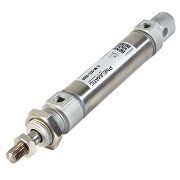


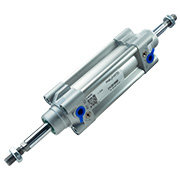
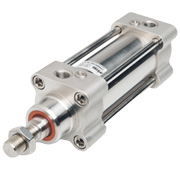
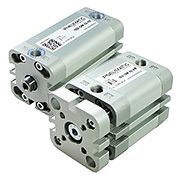
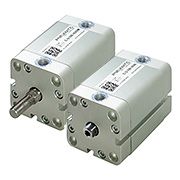
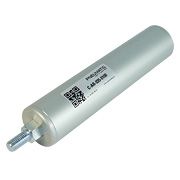

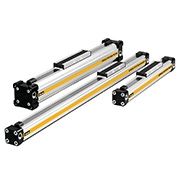
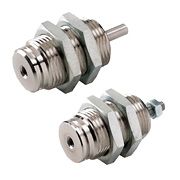
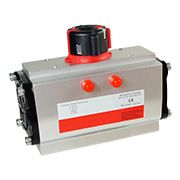
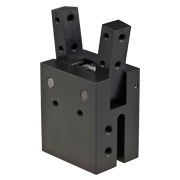
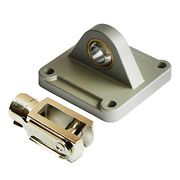
Login and Registration Form